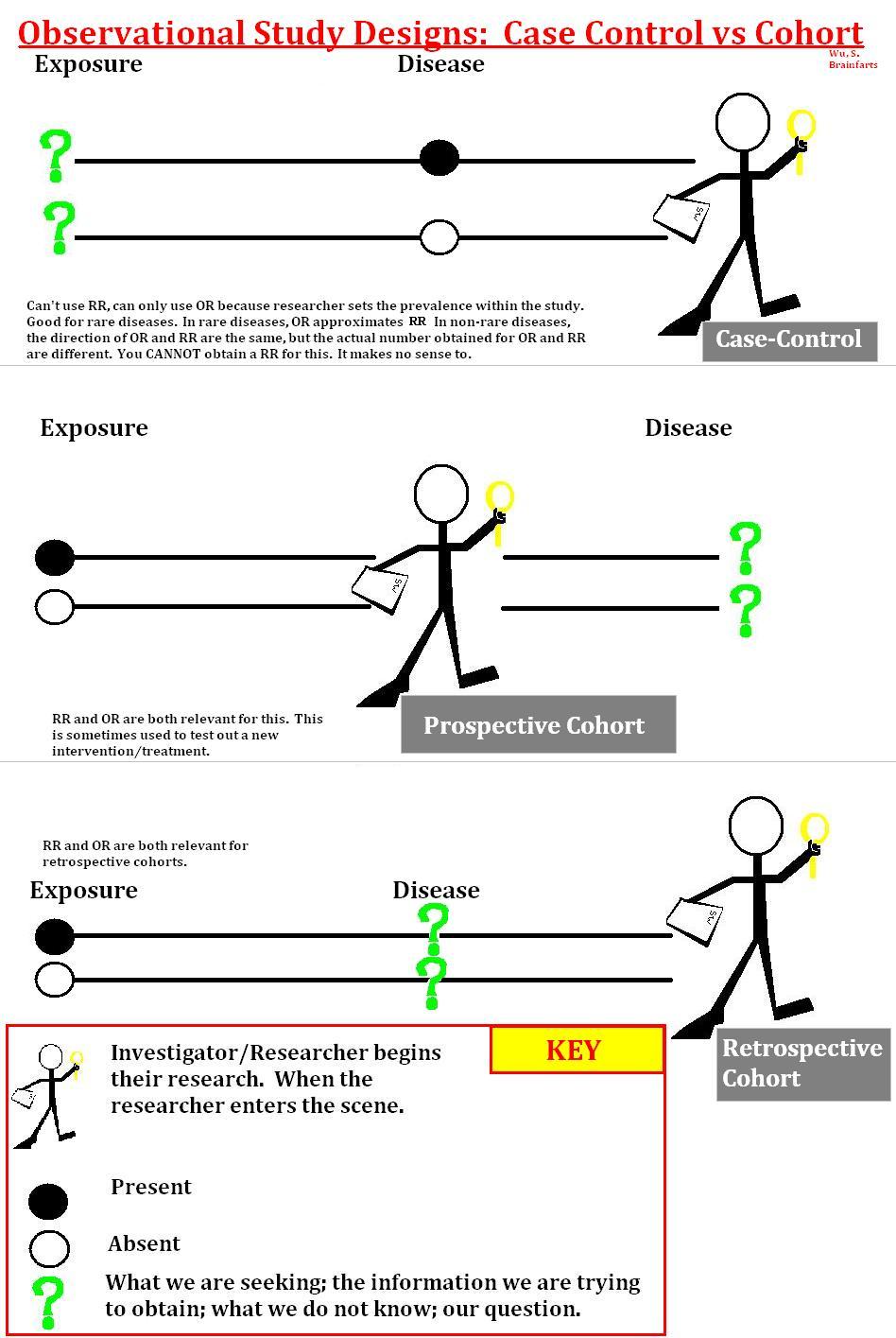Retrospective Cohort Study
(Redirected from Retrospective cohort study)
Jump to navigation
Jump to search
A Retrospective Cohort Study is a cohort study that is a retrospective study (where exposure and outcome have already occurred at the start of the study).
- AKA: Historic Cohort Study.
- Context:
- It can require sound data on exposure status for both cases and noncases at a designated earlier timepoint.
- It can be analyzed by a Retrospective Analysis Task.
- …
- Counter-Example(s):
- See: Ex Post Facto Experiment.
References
2018
2014
- (Kalogeropoulos, 2014) Andreas Kalogeropoulos (2014). "Understanding Retrospective vs. Prospective Study designs" (Talk)
- QUOTE: Retrospective vs. Prospective.
- Retrospective:
- The outcome has already happened (by the time of study design)!
- Practically, you just dig into data (~EHR)
- Can only be observational.
- Prospective:
- Interventional (has to be prospective)
- Observational
- Retrospective:
- QUOTE: Retrospective vs. Prospective.
2013
- http://en.wikipedia.org/wiki/Prospective_cohort_study
- A retrospective cohort study, also called a historic cohort study, (from Latin retr, "look back") generally means to take a look back at events that already have taken place. For example, the term is used in medicine, describing a look back at a patient's medical history or lifestyle. Retrospective cohort studies have existed for approximately as long as prospective cohort studies.[1]
2010
- https://onlinecourses.science.psu.edu/stat507/node/54
- QUOTE: Retrospective cohort study (historical cohort; non-concurrent prospective cohort) - An investigator accesses a historical roster of all exposed and nonexposed persons and then determines their current case/non-case status. The investigator initiates the study when the disease is already established in the cohort of individuals, long after the measurement of exposure. Doing a retrospective cohort study requires sound data on exposure status for both cases and noncases at a designated earlier timepoint.
2009
- (Barratt & Kirwan, 2009) ⇒ Helen Barratt, and Maria Kirwan. (2009). “Cohort Studies: Design, Applications, Strengths & Weaknesses of Cohort Studies.” In: http://www.HealthKnowledge.org.uk
- QUOTE: Retrospective cohort studies – exposure and outcome have already occurred at the start of the study. Pre-existing data, such as medical notes, can be used to assess any causal links, so lengthy follow-up is not required. This type of cohort study is therefore less time consuming and costly, but it is also more susceptible to the effects of bias. For example, the exposure may have occurred some years previously and adequate reliable data on exposure may be unavailable or incomplete. In addition information on confounding variables may be unavailable, inadequate or difficult to collect.
